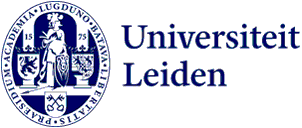
Tijmen Pronk creates MOOC: 'It is our responsibility to share knowledge'
What actually goes into the development of a massive open online course, a MOOC? University lecturer Tijmen Pronk developed the course 'Introduction to Comparative Linguistics of Indo-European Languages' independently. He talks about his motivation and experiences.
Pronk came up with the idea of developing a free MOOC on Indo-European linguistics several years ago together with Sasha Lubotsky. He noticed a great interest in the media for topics related to European languages and their origins. But Pronk also saw that journalists had no fixed place to gain more knowledge on the subject. 'It therefore felt like our scientific responsibility to share our knowledge with others,' he explains.
From design to video
Although the MOOC now stands firm and sound, development was not without difficulty. 'It is not that easy to develop a MOOC,' Pronk admits. 'I developed it in steps. First, I started talking to different people in 2019. That seems like a long time ago, but you have to conceptualise and develop everything yourself.'
Thus, together with two student assistants - Lotte Meester and Laura Dees - he took on the entire production process. It involved thinking about the design of the course to producing explainer videos. 'For the course, we made 20 videos. Then you have to write the scripts and shoot the videos, but that's not all. For instance, footage has to be arranged and there should be no copyright issues. That all takes time.'
Trying things out
In retrospect, Pronk finds these unusual tasks the most enjoyable part of the production process. 'Developing a MOOC is very different from giving a lecture. During a lecture, you constantly have the opportunity to make adjustments, either based on questions from students or because you see that things are going too slowly,' he says. 'With a MOOC, you have to assess all that in advance. Once it's online, it's hard to make adjustments. It forces you to think differently about teaching. I enjoyed trying out new things together with my student assistants. It's a challenge, but a fun one.'
More than 3,500 participants
Despite the many hours Pronk put in with his team, he enjoyed doing it. 'It's good to share the knowledge from your field with a wider audience. We are also going to use the recorded videos for a first-year lecture. This way, we were able to improve our own teaching at the same time,' he says.
Last but not least, the course has now attracted more than 3,500 participants from all over the world. 'There are already a few people who have completed the course and they are enthusiastic,' says Pronk. 'Also in the discussions among the lessons, I see that people find the course interesting. That's great to see.'
In the MOOC, participants are introduced to the European language family. In eight lessons, they learn how language develops and get an introduction to the 12 European language groups. Anyone with an interest in the subject can take the MOOC. 'But it is still a university course where a certain level of thinking is expected. It is made so that someone with some background knowledge of linguistics, history or archaeology should be able to follow it,' Pronk explains.
